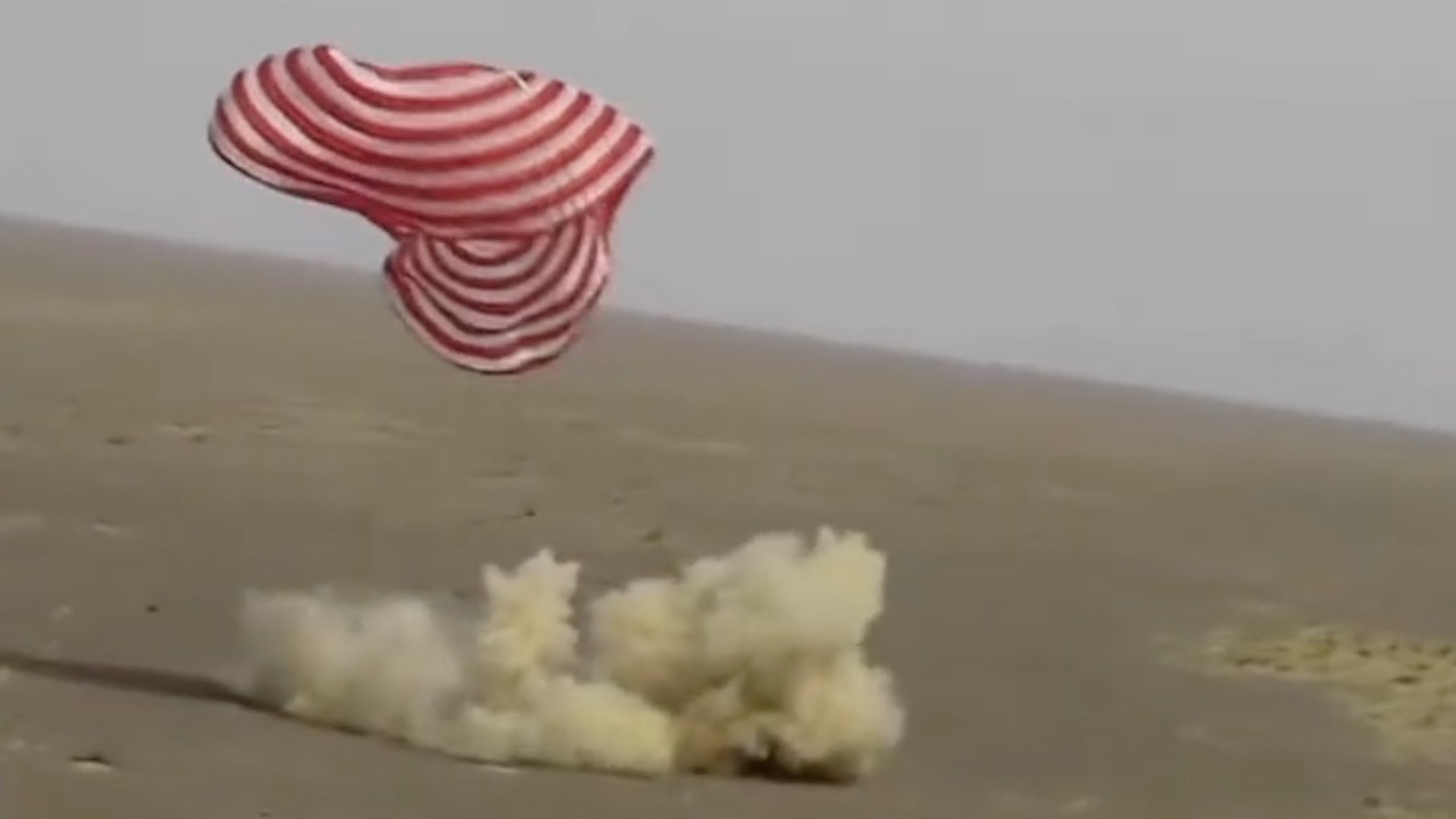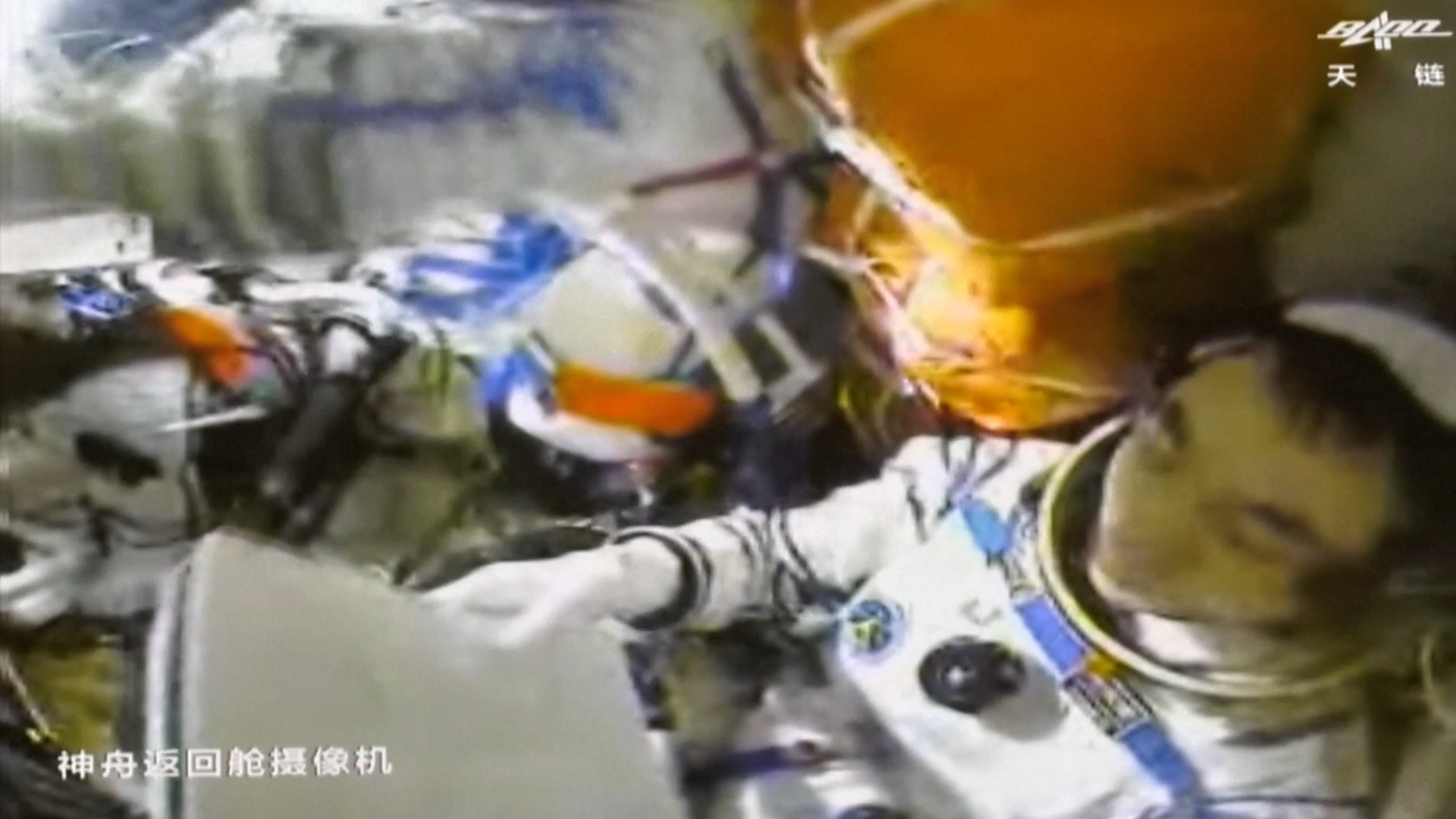00:37

Editor's note: Yang Yuguang is vice chair of the Space Transportation Committee of the International Astronautical Federation. The article reflects the author's views and not necessarily those of CGTN.
The Shenzhou-13 reentry capsule safely touched down at 9:56 a.m. on Saturday at the Dongfeng landing site in north China's Inner Mongolia Autonomous Region. The three astronauts – Zhai Zhigang, Wang Yaping and Ye Guangfu – are in good physical condition.
The success of the Shenzhou-13 mission is a milestone in China's space station program, signifying the completion of the technology verification phase.
What's special about Shenzhou-13?
The Shenzhou-13 crewed spaceship, together with its launch vehicle – the Long March-2F Y13 carrier rocket, shares similar technologies with other Shenzhou spaceships and LM-2F rockets.
But one thing is special: The Shenzhou-13/LM-2F Y13 combination has been standing by in the vehicle assembly building as an emergency rescue spaceship since the launch of Shenzhou-12. If anything went wrong with the Tianhe core module or the Shenzhou-12 spaceship, Shenzhou-13 would be launched within eight days to rescue the Shenzhou-12 crew.
Such design was unprecedented for China's manned space program. Engineers had to design the testing procedures meticulously, maintaining the reliability and safety of the Shenzhou-13/LM-2F Y13 combination when testing the necessary parameters within a short period.
After the return of Shenzhou-12, Shenzhou-13 was changed back to a normal mission instead of an emergency backup. Having one spaceship serve as the mission and one as the backup will become standard procedure once the space station begins full operation.
Unlike other spacecraft, Shenzhou-13 docked at the space station's nadir (Earth-facing) docking port, as the front docking port must be reserved for the Wentian and Mengtian lab modules, which will then be transferred to the side berthing ports. Docking at the nadir port requires a higher degree of timing and accuracy, and the technologies tested during the docking of Shenzhou-13 will be crucial for the construction of the space station.
In the future, Shenzhou spaceships will frequently dock at the nadir port, especially during rotations between expedition teams.
00:45

First Chinese woman to spacewalk
This flight was the second mission for Wang Yaping, China's first "space teacher." This time she made history again, becoming the first Chinese woman to conduct an extravehicular activity (EVA).
EVAs require great upper body strength. In order to prepare for the mission, Wang trained so hard in a neutral buoyancy pool that she could barely hold her chopsticks after each session. But it was because of her hard work and preparation that she successfully completed the EVA.
Exclusive: Taikonaut Wang Yaping to her daughter, 'Mommy's back'
EVAs will play a key role in the construction and future operation of China's space station, and it is of great importance to have both male and female astronauts participate. It is hoped that more female astronauts will one day fly to the space station.
In-orbit transfers of Tianzhou-2 cargo ship
During the Shenzhou-13 mission, the Tianzhou-2 cargo ship was detached by a robotic arm and transferred to the side berthing port of the Tianhe core module, which is good preparation for the formal construction procedure in the future.
The Shenzhou-13 crew also conducted remote-controlled manual docking of the Tianzhou-2 cargo ship. If the automatic docking system does not work, this operation will help ensure the success of the resupply mission.
The Shenzhou-13 mission lasted for half a year, which will be the normal duration for an expedition team in the future. Therefore, it is imperative that China verifies technologies that will allow astronauts to stay in space for a longer period of time.
Ensuring the health of astronauts is a great challenge for China's manned space program, as we entered space exploration without prior experience in this field. The Shenzhou-13 crew used the onboard treadmill, space bicycle and other exercise equipment daily. The good health of the returning crew shows the effectiveness of the fitness measures.
A regenerative life support system was also successfully tested on the Shenzhou-13 mission. The system, which includes a CO2 collection unit, urine processing unit and water recovery system, has processed and recycled so much waste, while also saving resources. Thanks to the system, we can bring more scientific research equipment, rather than supplies, to the station.
An educational platform
"Tiangong Classroom" has become a well-known feature of China's manned space program. Two educational lectures were livestreamed to the whole world. The Tianlian data relay satellite constellation provided continuous video and audio connections between the ground and the station, giving students around China the chance to communicate directly with our astronauts in orbit.
Since the beginning of China's manned space program, the Tiangong space station has not only been recognized as China's scientific research laboratory in outer space, but also as a cardinal platform for education and outreach.
Educational lectures in orbit are an effective way to educate the public on the importance of manned space activities. Moreover, these events encourage young people to choose science and technology as their career path, which has helped boost China's scientific research and high-technology development.
With the success of the Shenzhou-13 mission, China has mastered the technologies needed to construct its space station. On Saturday, the space station program officially advanced from the technology verification phase to the construction phase.
This year China will launch six flight missions for construction. By the end of 2022, we could see six astronauts meet in outer space.
That will be another historical moment for China.
Read more: Welcome home! China's Shenzhou-13 taikonauts return after six months in orbit

